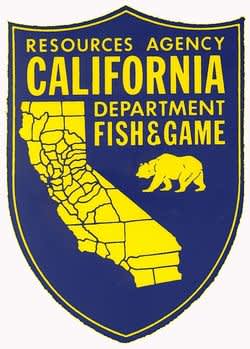California DFG and Partners use Aircraft and Submersible Camera to Count Pacific Sardine

Department of Fish and Game (DFG) pilots and biologists, along with partners, used new technological tools above and below the water to study the sardine fishery.
DFG, in partnership with the California Wetfish Producers Association, flew over Southern California waters in DFG’s Partenavia P68 Observer aircraft to complete surveys for Pacific sardine in coastal waters. Also for the first time, DFG confirmed the aerial identification of the fish from a vessel positioned on the schools, using a submersible video camera. During the August surveys, DFG biologists photographed schools of sardine to capture distribution and abundance.
“These surveys will help DFG to manage this sustainable fishery and add to our limited understanding of sardine distribution throughout the Southern California Bight,” said Michelle Horeczko, Senior Environmental Scientist on the Coastal Pelagic Species Project. “Data from these surveys may also be used by West Coast scientists as part of a new effort to look at the full range of sardine data from Canada to Mexico.”
The commercial sardine fishery was the second largest commercial fishery in California by volume, and sixth largest in value in 2011. Survey results and other information are used by state and federal fishery managers to set sustainable catch limits and fishing seasons that will prevent overfishing of the Pacific sardine population.
A consortium of commercial fishing industry members has used aircraft to photograph sardine schools annually off the coasts of Washington and Oregon since 2008. Photographs are enhanced to make sardine schools stand out from the background, and the area of each school is measured.
“This was an opportunity to use and adapt existing aerial methods to examine the specific patterns of distribution and abundance of sardine here in Southern California,” said Kirk Lynn, DFG environmental scientist with the Coastal Pelagic Species Project and aerial survey project lead.
The joint project is one of several collaborative opportunities made possible through research agreements between DFG and the California Wetfish Producers Association, and intended to increase DFG’s understanding of coastal pelagic species populations. DFG will use this approach to determine changes in abundance over time.
The Pacific sardine is a small, schooling fish commonly used for food and bait, and an important prey item for larger fish in coastal ecosystems. They are found in coastal temperate waters ranging from Baja California to southeast Alaska.
The commercial sardine fishery is managed by NOAA Fisheries through the Pacific Fishery Management Council, which uses a federal Coastal Pelagic Species Management Plan as a framework to manage Pacific sardine, as well as other coastal pelagic species. The DFG coordinates with other West Coast agencies through the Pacific Fishery Management Council to manage the Pacific sardine fishery.
For more information about Pacific sardine and other coastal pelagic fish, visit the DFG website at www.dfg.ca.gov/marine/cpshms.

